World Geography And Politics Daily News | 05 Jul 2023

Views (128)
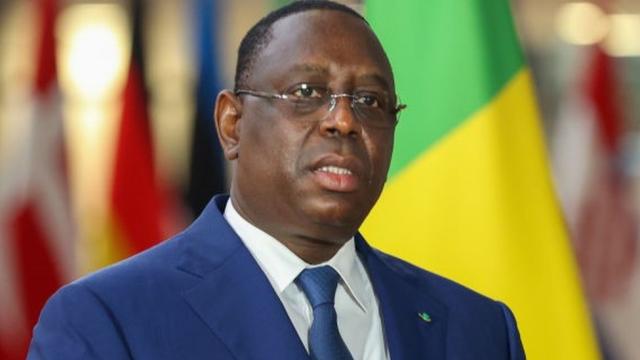
Global chemical weapons watchdog says it found no evidence to back Syrian claim of 2017 gas attack
The global chemical weapons watchdog said Tuesday it found no evidence to support a claim by Syria that its forces were attacked using toxic gas in 2017. The Organization for the Prohibition of Chemical Weapons said that its fact-finding mission concluded that “there are no reasonable grounds to determine that chemicals were used as a weapon” in two incidents in July and August 2017 in Massasneh, a village in the central province of Hama. Syria asked the OPCW to investigate after reporting a “mortar attack with poisonous gas” on its army in the town in fighting with rebels.
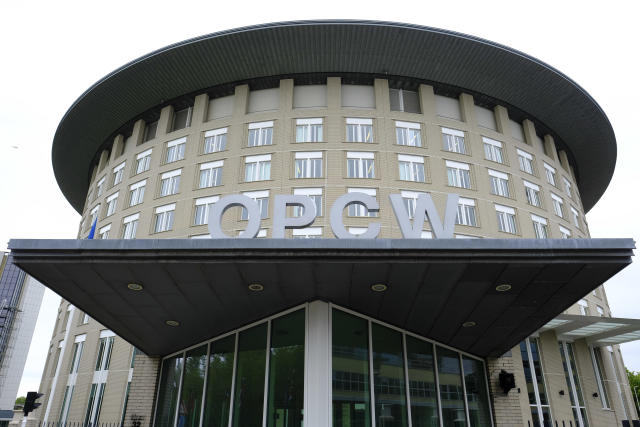
THE HAGUE, Netherlands (AP) — The global chemical weapons watchdog said Tuesday it found no evidence to support a claim by Syria that its forces were attacked using toxic gas in 2017.
The Organization for the Prohibition of Chemical Weapons said that its fact-finding mission concluded that “there are no reasonable grounds to determine that chemicals were used as a weapon” in two incidents in July and August 2017 in Massasneh, a village in the central province of Hama.
Syria asked the OPCW to investigate after reporting a “mortar attack with poisonous gas” on its army in the town in fighting with rebels.
The watchdog sent a team to Syria three times to investigate and interview witnesses but they found no evidence of a gas attack, according to the Fact-Finding Mission report.
The fact-finding mission has issued 20 reports covering 73 instances of alleged chemical weapons use in Syria. It has found that chemical weapons were used or likely used in 20 incidents. The mission is not mandated to apportion blame for such attacks.
Syria, which joined the organization in 2013 after being threatened with airstrikes in response to a chemical attack on the outskirts of the country’s capital, has denied using chemical weapons.
Jens Stoltenberg: NATO chief who faced Russia's war and Trump
NATO secretary general Jens Stoltenberg had already lined up a job as head of the central bank in his native Norway when Russia's invasion of Ukraine pushed allies last year to ask him to stay on. Three years later, when the NATO job came up, he was backed by two centrist heavyweights -- German chancellor Angela Merkel and then-US president Barack Obama
"I was surprised when I was asked to become the secretary general of NATO because I have never planned for being that," Stoltenberg recounted.
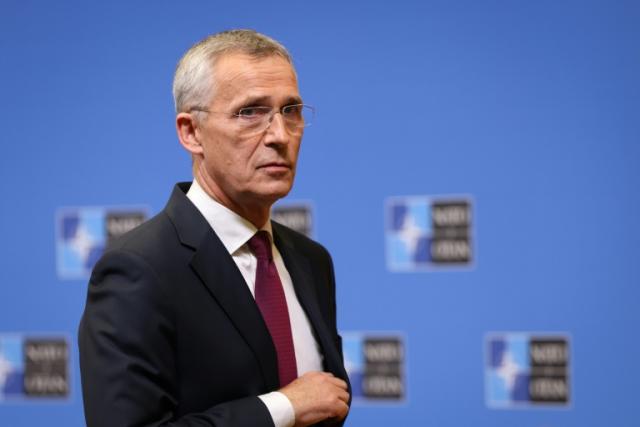
NATO secretary general Jens Stoltenberg had already lined up a job as head of the central bank in his native Norway when Russia's invasion of Ukraine pushed allies last year to ask him to stay on.
Now the Western military alliance's 31 nations are again asking the phlegmatic Scandinavian to stick around after failing to agree on a replacement.
The latest one-year extension announced on Tuesday will see Stoltenberg, 64, complete 10 years in charge at NATO and take him to a 75th anniversary summit in Washington in July 2024.
His decade at the helm began just months after Russia seized Crimea from Ukraine.
It has kept him in the key position as Europe faces its largest conflict since World War II.
In those years, he had to use all his diplomatic skills to convince former president Donald Trump to keep the United States, the dominant power, in the alliance.
And he scrambled to cope with the fallout of NATO's calamitous withdrawal from Afghanistan.
After that fraught period, Russia's all-out invasion of Ukraine has appeared to reinvigorate an alliance that often struggled for meaning after the end of the Cold War.
NATO has launched the biggest overhaul of its eastern defences and welcomed in Finland -- and allies hope Sweden soon.
Even French President Emmanuel Macron, who labelled NATO brain dead in 2019, said Russia's assault last year has given the alliance an "electric shock".
Under Stoltenberg's stewardship, NATO has trodden a careful line between stalwart backing for Ukraine and preventing tensions with Russia spiralling into nuclear war.
He has drawn praise for his cool-headed handling of incidents such as a missile strike in Poland that, despite initial alarm, turned out to be from Ukraine's air defences.
"Because of his strong and steady hand, our alliance is stronger and is more unified than it's ever been," US Secretary of State Antony Blinken said recently.
- Vietnam protests -
An economist by training, the former Norwegian prime minister never showed any particular fondness for defence or security matters during his ascent. But his experience left him with a strong international network.
Before he joined Norway's government at the head of the centre-left Labour Party, there was little to suggest he would lead a military alliance.
In Brussels, he is known for his straitlaced appearance and robotic style. But as a long-haired teenager in the 1970s, he threw stones at the US embassy in Oslo in reaction to the Vietnam War.
Born into a political family -- his father was minister, his mother a deputy minister -- the now married father-of-two followed that path despite initially hoping to be an academic.
"Actually I made one decision, one clear conscious decision, about my career and that was not to become a politician," Stoltenberg said.
After entering parliament in 1991, he rose rapidly, becoming minister of energy and then finance, before being named the country's youngest prime minister in 2000, the day after his 41st birthday.
Stoltenberg won international respect for his measured response to Norway's worst peace-time massacre.
When a right-wing extremist, Anders Behring Breivik, killed 77 people on July 22, 2011, Stoltenberg called for "more democracy" and "more humanity".
Three years later, when the NATO job came up, he was backed by two centrist heavyweights -- German chancellor Angela Merkel and then-US president Barack Obama
"I was surprised when I was asked to become the secretary general of NATO because I have never planned for being that," Stoltenberg recounted.
- 'Master Trump-whisperer' -
Stoltenberg required significant political nous to placate Trump, who resented what he saw as European freeloading and famously declared NATO "obsolete".
The US leader came to a 2019 NATO summit in England ready to break up an alliance that Washington had led since it was formed in 1949.
Many believe Stoltenberg helped talk him down, earning a nickname as a "master Trump-whisperer".
"He kept Trump in NATO, which was far from certain," said former senior NATO official Jamie Shea.
"He was one of the few European leaders that Trump was positive about."
Stoltenberg has also grappled with other prickly leaders, notably Turkish President Recep Tayyip Erdogan, who is still holding up Sweden's accession to NATO.
Trump's departure lifted one threat but NATO's next challenge again showed the strains in the trans-Atlantic relationship.
US President Joe Biden left European allies scrambling with the hasty withdrawal from Afghanistan, which cleared the way for the Taliban to seize power.
The war in Ukraine forced NATO to move on. But it also revealed some splits within the alliance.
Stoltenberg is trying to strike a consensus at a summit in July on Ukraine's bid to join NATO in future.
Eastern Europeans are pushing Kyiv's bid. Others, like the United States and Germany, are less keen.
One thing the allies cannot yet agree on is how to replace the Norwegian veteran.
In May, Stoltenberg nonetheless offered some advice to any eventual successor who, barring another extension, should come in late next year.
"Make sure that we stay together. That's the main task, the most important thing... to keep this family together," he said.
"Of course, that's not always easy."
del/rmb/gil
Factbox-West Bank city of Jenin - focal point of conflict
A city in the north of the Israeli-occupied West Bank, Jenin houses a crowded refugee camp by the same name with a population of some 14,000. Jenin has one of the highest rates of unemployment and poverty among 19 refugee camps in the West Bank, according to UNRWA, a U.N. agency that delivers basic services to Palestinian refugees.
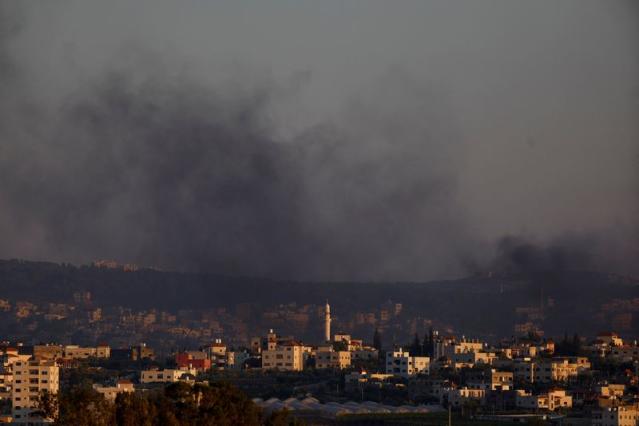
(Reuters) - Israeli forces hit the city of Jenin with drone strikes on Monday during one of the biggest incursions in the occupied West Bank in 20 years, killing at least eight people.
Here's what you need to know about Jenin, a focal point of surging violence between Israel and the Palestinians:
REFUGEE CAMP
A city in the north of the Israeli-occupied West Bank, Jenin houses a crowded refugee camp by the same name with a population of some 14,000. They are descendants of Palestinians dispossessed when Israel was created in 1948, their families coming from areas including Haifa and Nazareth.
Jenin has one of the highest rates of unemployment and poverty among 19 refugee camps in the West Bank, according to UNRWA, a U.N. agency that delivers basic services to Palestinian refugees.
BATTLEGROUND
Jenin was the scene of some of the worst violence during the second Intifada, which began after the failure of U.S.-backed peace talks in 2000 and mushroomed into an armed conflict between Israel and Palestinian militant groups.
In 2002, Israel launched a major assault in Jenin refugee camp, part of a wider West Bank operation which Israel said aimed to stop militant attacks including suicide bombings.
A U.N. report issued in August, 2002, said 52 Palestinians died in Jenin, as many as half of them civilians, while Israel lost 23 soldiers there.
The report, which disputed a claim by the late Palestinian official Saeb Erekat that 500 people had been killed in Jenin, faulted all combatants for putting civilians in harms way.
The report listed more Israeli than Palestinian abuses, especially Israel's refusal to let humanitarian workers enter the camp. But it also said Palestinian fighters were lodged in civilian homes.
More than 400 homes were destroyed in the operation and more than a quarter of the population was left homeless, according to UNRWA, which coordinated and implemented the reconstruction of the camp.
RENEWED VIOLENCE
Jenin has emerged as a flashpoint during a wave of Israeli-Palestinian violence that has convulsed the West Bank for more than a year. Deadly confrontations in the area have been a regular occurrence.
Last month, Palestinian fighters and Israeli troops waged an hours-long gunbattle in Jenin in which six Palestinians were killed and more than 90 wounded. Seven Israeli personnel were wounded. Palestinian gunmen shot dead four Israelis near a Jewish settlement in retaliation, prompting settlers to attack Palestinians towns, torching buildings and cars.
In January, Israeli forces killed seven gunmen and two civilians in a raid in Jenin. The following day, a Palestinian gunman killed seven people in a synagogue on the outskirts of Jerusalem.
Several militant groups have a presence in Jenin, including the Iran-backed Islamic Jihad. The Islamist movement Hamas, which controls Gaza, and the armed wing of President Mahmoud Abbas' Fatah faction also have a foothold. Militants in the camp operate under the umbrella of the Jenin Brigades.
JOURNALIST KILLED
Al Jazeera's Shireen Abu Akleh, a Palestinian-American journalist, was shot and killed while covering an Israeli army raid last year in Jenin.
Israel says Abu Akleh, who was wearing a clearly marked protective press vest and helmet, was likely unintentionally shot by an Israeli soldier but could also have been struck by Palestinian fire.
Abu Akleh's family believes she was killed deliberately, and witnesses to the incident have said there were no Palestinian fighters firing in the area where she was standing.
(Compiled by Tom Perry; Editing by Christina Fincher)
'Liberty, equality, fraternity' for all? New riots make France confront an old problem
PARIS (AP) — “Liberty, Equality, Fraternity”: The lofty ideals to which France has long aspired are embossed on coins and carved above school doors across the land. Within hours, the first fires of anger and revenge were lighting up the night skies of Nanterre, the Paris suburb where the teenager, Nahel, was declared dead at 9:15 a.m. last Tuesday. From the town on the fringe of the French capital’s high-rise business district, with its disadvantaged housing projects, glaring wealth gaps, and melting-pot mix of races and cultural influences imported from France’s former colonies, the flames of fury quickly spread.
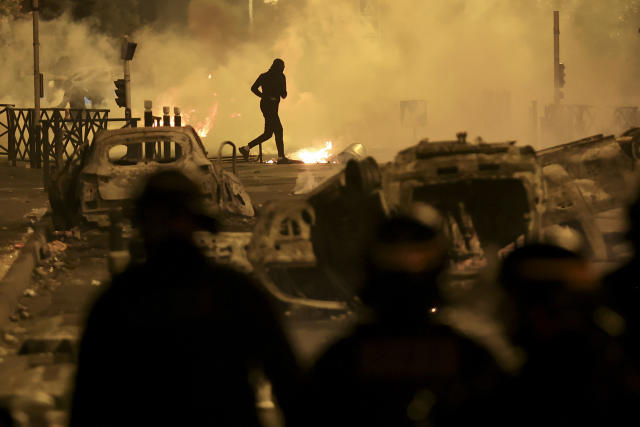
From the town on the fringe of the French capital’s high-rise business district, with its disadvantaged housing projects, glaring wealth gaps, and melting-pot mix of races and cultural influences imported from France’s former colonies, the flames of fury quickly spread.
After more than 3,400 arrests and signs that the violence is now abating, France is once again facing a reckoning — as it did after previous riots in mixed-race, disadvantaged neighborhoods in the 1980s, 1990s, 2000s and 2010s.
And the uncomfortable central question remains the same: What is France doing wrong that prevents chunks of its population, particularly among non-whites, from being able to buy into its promise of equality and fraternity for all?
THE PROBLEMS ARE BOTH OLD AND NEW
For Yazid Kherfi, who spends his time driving from one housing project to the next, speaking to young people about how to avoid the route that he took into crime and prison, the violence was a cry of distress from a generation he says feels unloved and left by the wayside.
The minivan Kherfi uses has a quote from Martin Luther King painted on the back: “We must learn to live together as brothers or we will all perish together as fools.” But on his rounds, Kherfi says he frequently hears young people complain that police single them out because of their color.
“The police aren't well trained to work in difficult neighborhoods. Some police are racist. There are violent police. They exist. I'm not saying all the police but it's still a certain number," he says. “Blacks and Arabs are stopped far more frequently than whites.”
“We are a long way from liberty, equality, fraternity," he adds. “The reality is that people find all these situations very, very hard. It's been like this for more than 40 years. So of course, every time there are riots in France, it's linked to a young person's death related to a policing operation. And the police rarely blames itself.”
HOW TO TACKLE RACISM WHEN IT CAN'T BE MEASURED?
Measuring the scale of racism and racial inequality in France is complicated by its official policy of color blindness, with strict limits on data that can be collected. For critics, that guiding philosophy has made the state oblivious to discrimination. France's census has no questions about race or ethnicity.
“For 40, 45 years there have been warning signs about discrimination,” says Abel Boyi, head of a group called “All Unique, All United” that aims to reconcile young people with France and its republican values.
Boyi, who is Black, decries the state's colorblindness as “a French hypocrisy." He says he regularly encounters young people of color and also white people from disadvantaged neighborhoods who apply for dozens of jobs but aren't hired “because the family name sounds foreign, because the address isn't a good one.”
“Unfortunately, when there's an injustice, there's always a radical fringe that tips into violence. We saw these young people, aged 12 to 19 ... at 1, 2, 3 o'clock in the morning burning cars, stoning police officers, stoning buses. It's terrible,” Boyi says. “The anger is righteous but the method is wrong.”
THE VISUALS ADDED FUEL TO THE FLAMES
Police officer Walid Hrar says, however, that the relationship between France's forces of law and order and disadvantaged neighborhoods he works in isn't as broken as the rioting made it seem.
He runs a volunteer group of officers, The Guardians of Fraternity, who meet with neighborhood kids to try to build understanding and help them see that behind their uniforms, they are people, too. “Sometimes, the talks are very hard, very stormy,” he acknowledges.
But Hrar, who is of Moroccan descent and Muslim, says the police force has “changed enormously" and become more diverse since he joined up.
That was in 2004. France was swept by rioting the following year. He has spent his career in Paris' northern suburbs where that violence first erupted, when 15-year-old Bouna Traoré and 17-year-old Zyed Benna were electrocuted while hiding from police in a power substation in Clichy-sous-Bois.
One difference between then and now, Hrar says, is that the new generation of rioters seems to know no limits, trashing schools, town halls, police stations and other symbols of authority.
“With some, the breakdown is total, that is true,” Hrar says. “There is real groundwork that needs to be done."
Another key difference: social networks. This generation weaned on TikTok and Snapchat not only celebrated mayhem in short videos but, the government says, sometimes organized on their networks, too. Memes and hashtags about looting quickly swamped references about justice for Nahel. Macron said some rioters seemed to be acting out "the video games that have intoxicated them.”
It all adds up to something toxic and dangerous, with deep cracks in the foundations of a country still unreconciled with its often violent colonial past and with engrained discrimination and inequalities that defy quick fixes.
“How do we bring together the multitude of histories into one common history that concerns us all, regardless of skin color and origin?” said Boyi. “That is France's great challenge for the 21st century.”
—-
Paris chief correspondent John Leicester has reported from France for The Associated Press since 2002.
Factbox-NATO's reappointed leader, Jens Stoltenberg
* Stoltenberg took on the NATO role in 2014 after serving as U.N. climate envoy and prime minister of Norway. * He said in February he would not seek another extension of his tenure at NATO, having already had it prolonged three times. The last time he agreed to an extension, he had to give up an appointment as Norway's central bank governor.
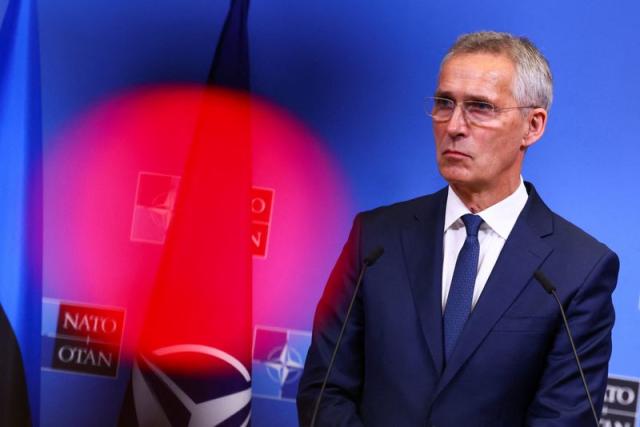
(Reuters) - Here are some facts about NATO Secretary General Jens Stoltenberg, whose contract will be extended for a further year under a decision by the Western defence alliance on Tuesday:
* Stoltenberg took on the NATO role in 2014 after serving as U.N. climate envoy and prime minister of Norway. He led Norway between 2005-2013 in a coalition headed by the Labour Party, whose youth wing he had led in his 20s.
* He said in February he would not seek another extension of his tenure at NATO, having already had it prolonged three times. The last time he agreed to an extension, he had to give up an appointment as Norway's central bank governor.
* Stoltenberg was an anti-war activist in his youth who admitted to hurling stones at the U.S. Embassy in the 1970s in protest against the Vietnam war. He studied economics and was widely seen as a pragmatic centrist during a long career in Norwegian politics, including stints as finance minister and minister for trade and energy.
* He pushed his government to mediate, often in secret, on conflicts, including in Columbia and Afghanistan, and resolved a longstanding maritime border dispute with Russia.
* Stoltenberg was dubbed the "Trump-whisperer" for convincing Donald Trump to stick with NATO after the then-U.S. president complained that allies were spending too little on defence and threatened to pull out.
* The NATO leader has been credited with keeping the alliance together over Russia's invasion of Ukraine and striking a balance between those demanding maximum support for Kyiv and others urging more caution.
SOME COMMENTS ABOUT STOLTENBERG:
* "He thrives on compromise," Frank Aarebrot, professor of comparative politics at the University of Bergen and an acquaintance of Stoltenberg.
* "He's got a vast political network and good political intuition ... and he will also listen to civil society, not just people within the 'security cage'," said Jan Egeland, a former U.N. Under-Secretary General.
SOME COMMENTS BY STOLTENBERG:
"Russia's use of military force to modify its borders is unacceptable ... We will not live in a world where the strongest one prevails."
"NATO is determined to set the gold standard on addressing the security implications of climate change." - June 28, 2022
Asked in February this year what words of wisdom he would give to his successor, he replied:
"To keep Europe and North America together."
(Writing by Philippa Fletcher and Andrew Gray; editing by Gareth Jones)
Senegal's Macky Sall bows to pressure from Sonko's supporters over third term
Macky Sall caught many people off-guard with his decision not to seek a third term.
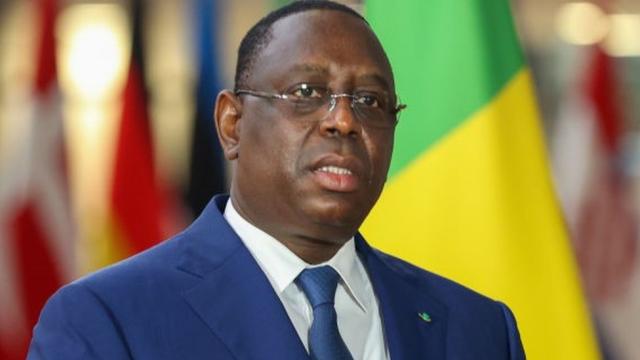
Senegal's President Macky Sall appears to have saved his country from plunging into a deeper crisis by declaring that he will step down at the end of his two terms.
Political analyst Alioune Tine compared his decision to "deactivating a bomb", pointing out that popular opposition politician Ousmane Sonko had threatened a new wave of mass protests if Mr Sall ran for a controversial third term.
The 61-year-old president's announcement, in a much-awaited television address on Monday night, caught many people by surprise.
Momentum had been building within his ruling party for him to seek re-election, with an overwhelming majority of its public representatives - including lawmakers and mayors - asking him to lead them into next year's poll.
Many of his supporters who were around the presidential palace in the capital, Dakar, were in tears when he announced his decision.
"I have a clear awareness and memory of what I have said, written and repeated, here and elsewhere, namely that the 2019 term was my second and final term. I have a code of honour and a sense of historical responsibility that compels me to stand by my dignity and my word," Mr Sall said.
But his critics hold a different view, pointing out that Mr Sall had infamously said in French "ni oui, ni non" (neither yes nor no) when journalists asked him soon after the 2019 election whether or not he would run for office again in 2024.
This was highly controversial as Senegal's supreme law - the constitution - bars a president from running for more than two terms, but Mr Sall's camp had been arguing - until just a few days ago - that his first term did not count as the current constitution was only adopted in his second term.
Sources close to the presidential palace told the BBC that some of Mr Sall's advisers - as well as relatives, who had gained top posts in state companies under his rule - had urged him to seek re-election. They feared a new president would remove them from their posts, and they would also lose economic benefits at a time when Senegal's fledgling oil and gas industry was expected to grow.
For the opposition, the thought of Mr Sall, and his hangers-on, remaining in power was anathema, especially as they believed that his government was becoming increasingly authoritarian.
Mr Sonko - who is currently under house arrest - rallied his mostly young supporters against Mr Sall, resulting in the deaths of at least 16 people in clashes with the security forces since March.
Ahead of Mr Sall's address, Mr Sonko made a new call on "all the Senegalese people to stand up, [and] to face him" if he ran for a third term.
Mr Sall appeared to have finally bowed to the pressure, saying he wanted to "preserve the image of democracy, stability... that Senegal has internationally".
His decision is in sharp contrast to that of some of the other leaders in the region.
In Ivory Coast, President Alassane Ouattara won a controversial third term in 2022. The poll was boycotted by the opposition, which argued that his candidacy violated the constitution.
In Togo, President Faure Gnassingbé is currently in his fourth term after the constitution was amended, dropping a two-term limit.
Against this backdrop some political analysts believe that Mr Sall has prevented democracy from sliding backwards in his country, with African Union Commission chairman Moussa Faki being among those who has praised his decision not to seek a third term.
But Senegal's former Prime Minister Aminata Touré said that Mr Sall had not made a "heroic move".
"He is just applying the constitution. He should have said that the minute he got re-elected in 2019. This would have saved the country all the turmoil and the trouble we went through," she added.
0 Likes
